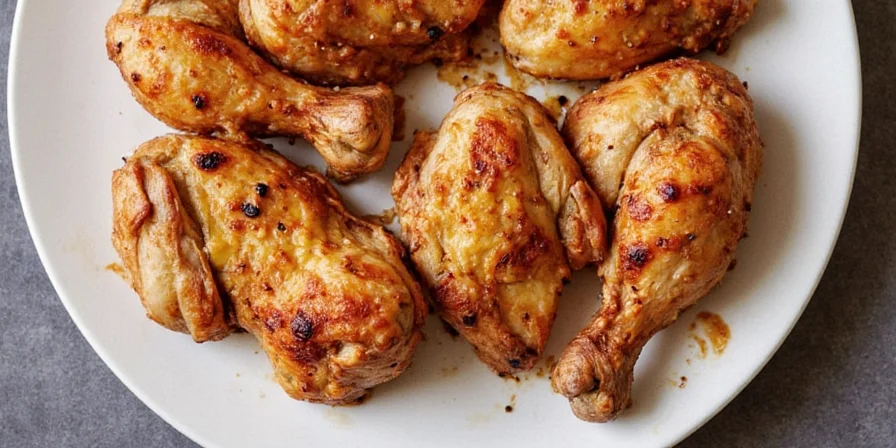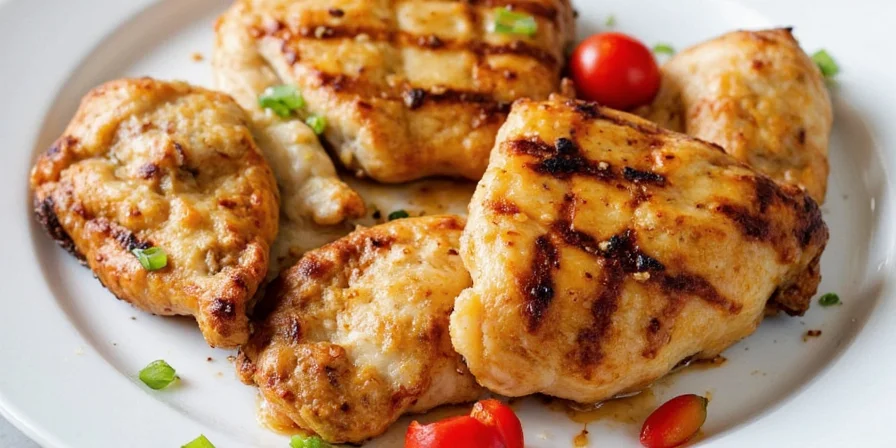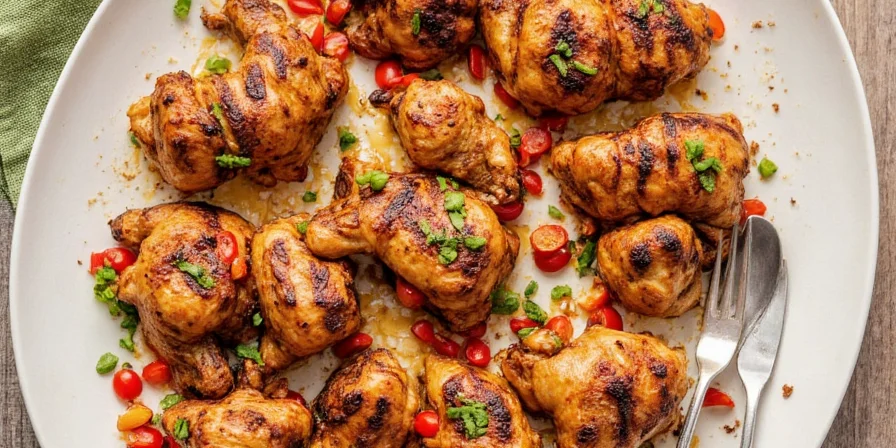If you've mastered basic buttermilk chicken but crave truly memorable flavors, you're ready for the next frontier. This guide delivers scientifically grounded spice innovations specifically engineered for grilled buttermilk chicken—transforming a backyard staple into a conversation-starting dish. We target home cooks seeking to break free from generic rubs and spice enthusiasts curious about cross-cultural flavor chemistry.
Forget random experimentation. Here's how unexpected pairings leverage molecular interactions to create balanced, restaurant-quality results—without requiring professional equipment or obscure ingredients.
Why Buttermilk Chicken Responds Exceptionally to Bold Spice Innovation
- Acidic foundation: Buttermilk's lactic acid gently tenderizes while creating optimal pH for spice compound absorption.
- Neutral canvas: Its subtle tang amplifies complex spice notes without competing flavors.
- Thermal resilience: Properly marinated chicken retains moisture during high-heat grilling, allowing spice crusts to develop without burning.
The secret lies not in piling on heat, but in strategic pairing where compounds complement rather than clash.
10 Scientifically Optimized Spice Pairings for Grilled Buttermilk Chicken
| Spice Combination | Flavor Chemistry | Execution Insight |
|---|---|---|
| Cumin + Sumac + Lemon Zest | Terpenes in sumac interact with cumin's earthy compounds for bright complexity | Add parsley after grilling to preserve volatile oils |
| Smoked Paprika + Cocoa Powder + Chili Flakes | Theobromine in cocoa binds with capsaicin, reducing perceived heat intensity | Apply honey glaze in final 3 minutes to prevent burning |
| Turmeric + Coriander + Cilantro Seed | Curcumin solubility increases with coriander's fatty acids | Toast seeds whole before grinding to release essential oils |
| Gochugaru + Sesame Oil + Garlic | Sesamol in oil enhances gochugaru's umami without overpowering | Use gochujang as finishing sauce to layer fermented depth |
| Dried Mushroom Powder + Thyme + Rosemary | Glutamates in mushrooms amplify thyme's thymol for savory intensity | Mix powder with oil to create paste for even adhesion |
| Cardamom + Star Anise + Clove | Anethole from anise balances clove's eugenol for warm complexity | Limited to 1.5% of total rub weight to avoid bitterness |
| Hatch Green Chile Powder + Lime Zest + Oregano | Citral in lime zest counteracts chile bitterness | Serve with avocado crema to cool palate between bites |
| Szechuan Peppercorn + Black Pepper + Soy Sauce | Hydroxy-alpha-sanshool numbing effect modulates capsaicin burn | Marinate 8+ hours for full penetration of alkaloids |
| Fennel Seed + Orange Zest + Bay Leaf | Anethole-limonene synergy creates citrus-floral top notes | Toast bay leaves with fennel to deepen rosin compounds |
| Urfa Biber + Cinnamon + Brown Sugar | Vanillin in cinnamon stabilizes capsaicin during caramelization | Optimal for dark meat; thighs develop richer crust |
Flavor Development in Action: Visual Reference Guide





Precision Application Methodology
- Dual-stage seasoning: Apply dry rub 4 hours pre-grill, then oil-based glaze 15 minutes before cooking for maximum flavor layering.
- Acid timing: Citrus components added ≤90 minutes pre-grill prevent protein degradation from over-marinating.
- Post-grill enhancement: Finish with fresh acid (vinegar/citrus) to reactivate spice compounds dulled by heat.
- Wood pairing: Use fruitwoods (apple/cherry) exclusively—resinous woods overwhelm delicate spice notes.
- Blend calibration: Taste rubs diluted in buttermilk to simulate final flavor interaction.
Cultural Fusion Perspective: Why These Pairings Defy Tradition
Traditional spice pairings often stay within cultural boundaries, but modern flavor science reveals unexpected cross-cultural synergies. The Urfa Biber-cinnamon blend merges Turkish and Southeast Asian traditions—previously considered incompatible—because phenolic compounds in both ingredients create shared aromatic pathways. Similarly, mushroom powder with thyme bridges European and East Asian umami traditions through glutamate synergy, demonstrating that flavor compatibility transcends geographic origins when molecular interactions align.
Critical Pitfalls in Experimental Spice Application
- Compound saturation: Exceeding 2% total spice weight per pound creates chemical imbalance where no single note shines.
- Thermal degradation: Direct flame exposure above 350°F breaks down volatile compounds like limonene—always use indirect heat for spice-heavy items.
- Resting neglect: Skipping the 8-minute rest causes spice oils to wash away with juices during slicing.
- Flavor axis imbalance: Successful blends require precise sweet-salt-bitter-sour-umami ratios; focus on heat alone creates one-dimensional results.
- Stale component use: Ground spices lose 70% volatile compounds after 6 months—test potency by aroma intensity before use.
Frequently Asked Questions
Can these blends work with alternative proteins like tofu or fish?
Absolutely—adjust marinating time based on protein density. Fish requires ≤30 minutes due to delicate structure, while tofu benefits from 4+ hours for full absorption. Reduce salt content by 25% for plant-based proteins.
Why avoid direct flame with spice-heavy chicken?
Most ground spices combust below 375°F, creating acrid compounds that dominate flavor. Indirect heat (300-350°F) allows Maillard reaction without burning spice constituents.
How do I salvage an over-spiced rub?
Create a neutralizing paste: mix equal parts plain yogurt, honey, and olive oil. Apply thinly to affected areas and refrigerate 1 hour before grilling. The lactic acid and sugars rebalance volatile compounds.
Do spice potency levels vary by brand?
Significantly. Test potency by rubbing a pinch between fingers—if aroma doesn't transfer strongly within 10 seconds, potency is insufficient. Opt for whole spices you grind fresh for maximum volatile retention.
Final Implementation Strategy
True flavor innovation requires understanding why pairings work, not just following recipes. Start with one unexpected combination—like cocoa-smoked paprika—and document how each variable (marinating time, heat level, finishing technique) affects the final profile. This methodical approach transforms random experimentation into repeatable mastery. When executed precisely, these pairings don't just season chicken; they create multisensory experiences where science and culture collide on the palate. Your grill is now a flavor laboratory—time to run some delicious experiments.











 浙公网安备
33010002000092号
浙公网安备
33010002000092号 浙B2-20120091-4
浙B2-20120091-4